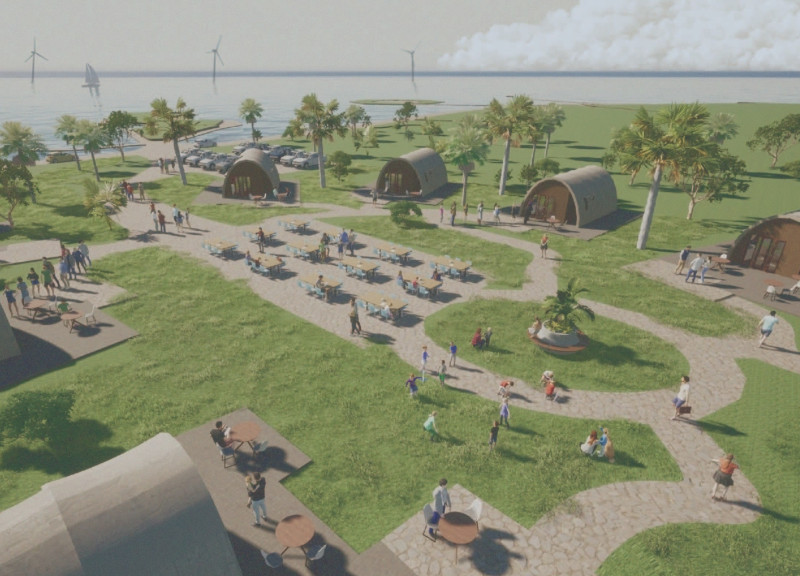5 key facts about this project
NEW. C.T. addresses the need for adaptable living and working spaces for self-employed individuals on Jeju Island. Emerging from the socio-economic pressures brought on by the COVID-19 pandemic, this initiative merges traditional housing concepts with modern needs. The design offers low-cost modular units that support both residential and commercial functions. These spaces encourage a sustainable lifestyle and foster community engagement while allowing safe interactions in market settings.
Material Selection
Hwang To, a traditional Korean soil, serves as a key material in this design. Known for its insulation and humidity control, it aims to maintain a comfortable living environment while reducing energy use. The project also incorporates recycled concrete, which contributes to sustainability by minimizing construction waste and promoting economic efficiency. Additionally, wood is used in various elements, adding warmth and visual appeal that connects the homes with the local natural environment.
Architectural Features
The design features an arch-shaped roof, which effectively reduces wind resistance. This thoughtful form aligns with the climate conditions on Jeju Island, addressing both aesthetic concerns and energy efficiency. A double outer skin in the Ctesiphon structure provides insulation while lessening the impact of wind forces, proving useful for the micro housing concept.
Traditional Elements
Key traditional elements are integrated into the design, such as Daecheong. This feature enhances cooling in summer by utilizing wind convection and ensures warmth during winter months. The C-shaped building layout protects the courtyard from intense winds, contributing to a stable internal climate. Such traditional components meet the cultural and functional needs of the residents.
Thermal Strategy
An important aspect of the thermal design is the use of Ondol panels, a traditional Korean underfloor heating system. It operates by warming the air below the floors, creating even heat distribution throughout the living spaces. The synergy of Hwang To as a finishing material supports heat retention while improving insulation.
The design illustrates a blend of traditional practices with modern living requirements. It prioritizes comfort and functionality while maintaining a strong connection to cultural heritage.



















































